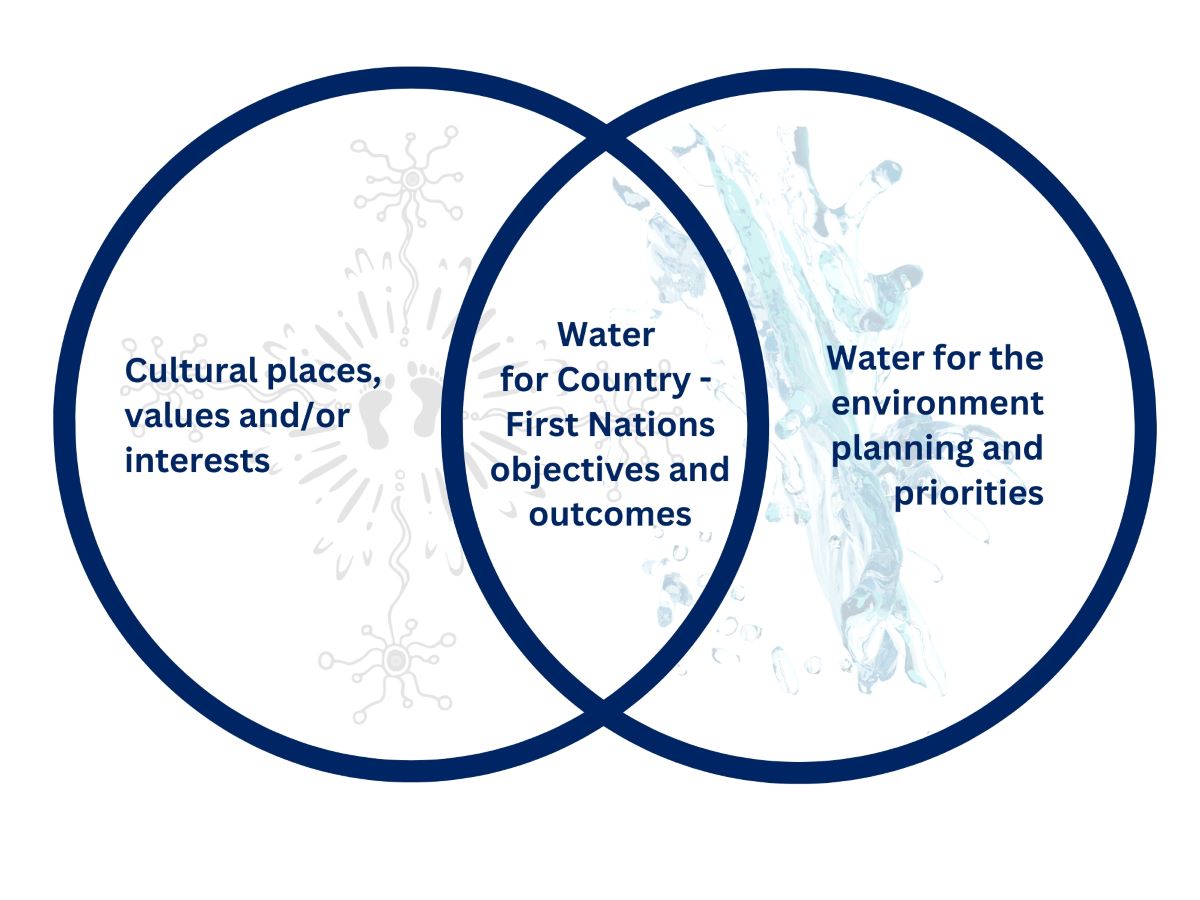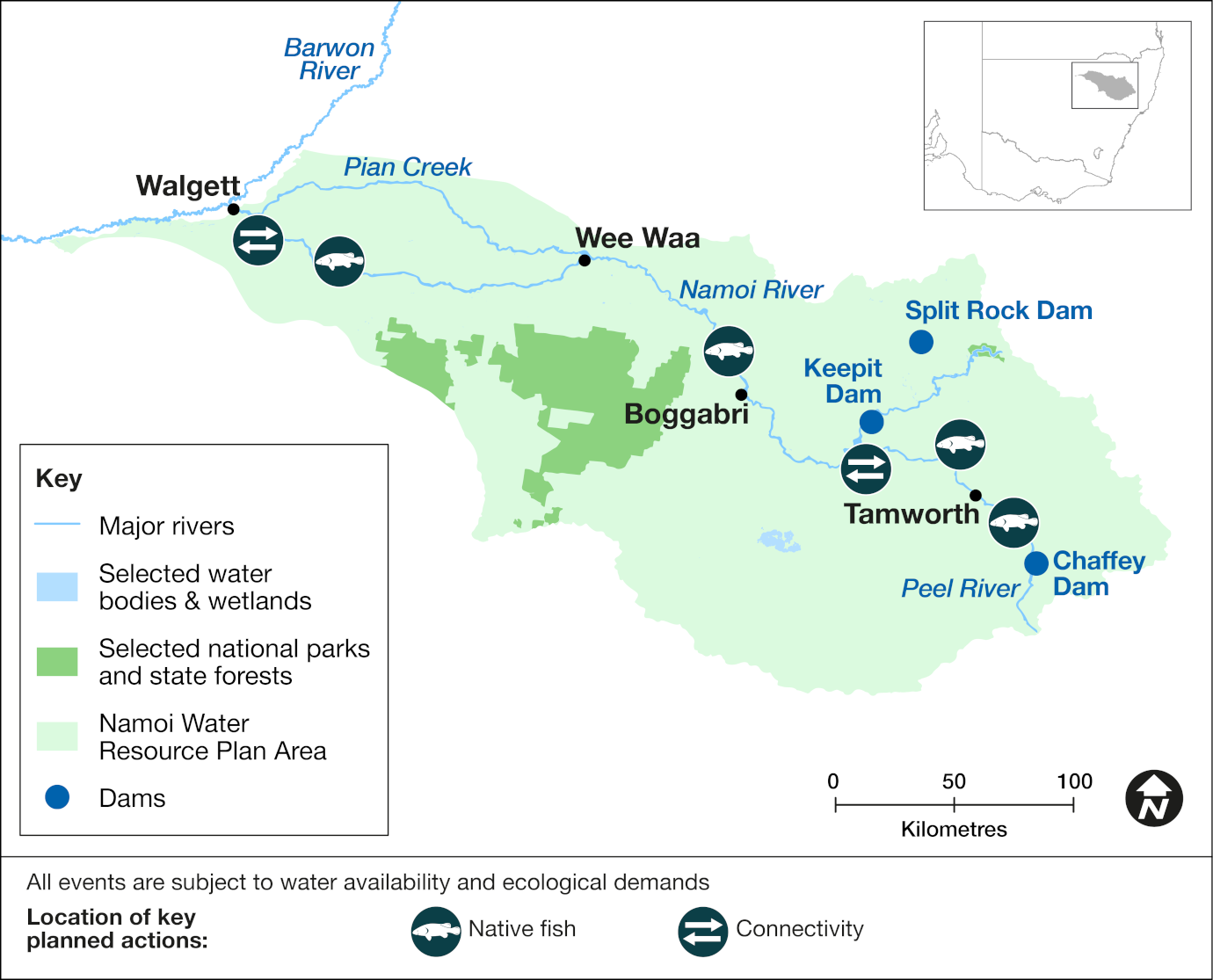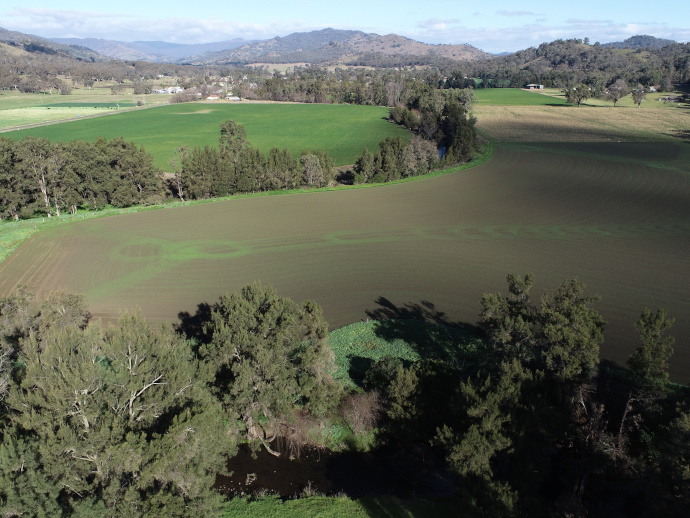Water that is allocated and managed specifically to improve the health of rivers, wetlands and floodplains is known as water for the environment.
Our environmental water management teams work with local communities, Aboriginal representatives, partner agencies, and other stakeholders to develop detailed annual plans for the use of water for the environment in each catchment, including how its use is prioritised.
Water for rivers and wetlands
The 2023–24 water year saw drier conditions return following 3 consecutive flood years. Water managers focused on supporting the recruitment of river blackfish, Murray cod, and eel-tailed catfish over spring and summer.
From late October 2023 to mid-January 2024, water for the environment was combined with irrigation and town water supply orders to provide a stable 100 megalitres (ML) per day flow in the Peel River at Piallamore. If 60 ML was released for irrigation and town water supply, 40 ML of water for the environment was released to achieve the 100 ML/day flow target at Piallamore. A total of 4,500 ML, 3,600 ML Environmental Water Allowance and 900 ML Commonwealth held water, was delivered over 81 days.
In the Namoi River, the Commonwealth Environmental Water Holder delivered 8,315 ML between 28 September and 7 December targeting a low flow at Goangra. The flow objectives were to support the movement and dispersal of native fish and refresh water quality in refuge pools. The delivery also provided a connection flow with the Barwon River at Walgett.
In the year ahead, water managers will likely continue to support native fish recovery, particularly below Wee Waa, by providing flows that support fish movement and dispersal opportunities in the system.
Management of water for the environment in the Peel catchment will continue to focus on in-channel productivity, habitat quality and native fish population recovery upstream of Tamworth. Water managers will likely deliver flows in spring and autumn.
With a moderate general security account balance in the Namoi as of 1 July 2024, water managers can plan to support resilience moving into a potentially dry period by holding water in the general security carryover account.
Partnering with Aboriginal peoples

Environmental water managers have been working to support Aboriginal people’s priorities in water management.
Water for Country is environmental water use planned by the Department of Climate Change, Energy, the Environment and Water and Aboriginal people to achieve shared benefits for the environment and cultural places, values and/or interests.
The Namoi is home to the Kamilaroi people. Water managers are building relationships with the Kamilaroi people to learn about the cultural significance of the river and its floodplain and share knowledge on the ecological values of the waterways. Water managers will continue to support Aboriginal representatives by including their priorities in annual water planning processes.
Plans are in motion to formalise the Namoi–Peel Environmental Water Advisory Group. The environmental water advisory group draws on the expertise and experience of community members for advice on developing annual watering plans. It will include Aboriginal representation, leading to shared benefits for cultural and environmental outcomes.
Water managers will participate in a project led by the Department of Primary Industries – Fisheries, which aims to include cultural knowledge, experience and perspectives in the fish and flows framework to develop flow-related cultural objectives in support of fish conservation.
Weather and water forecast
As of June 2024, the El Niño–Southern Oscillation outlook is neutral. That is, neither La Niña nor El Niño conditions are favoured as oceanic and atmospheric indicators have returned to neutral levels. International climate models suggest neutral El Niño–Southern Oscillation conditions will persist through the southern winter, but there are some signs that La Niña conditions could form later in the 2024–25 water year.
Water managers have prepared watering plans that consider a range of weather and water availability scenarios. This is known as resource availability scenario planning. As dam levels remain on average, around 70%, a degree of uncertainty remains around resource availability.
Resource availability scenario
This table provides details about how we plan for different resource availability scenarios. Moderate conditions are forecast for the Namoi catchment in 2024–25, which means water availability planning will follow the ‘moderate’ scenario.
Current forecast: Moderate
| Conditions | Main aim | Other aims |
|---|---|---|
| Very dry | Protect | Avoid critical loss Maintain key refuges Avoid catastrophic events |
| Dry | Maintain | Maintain river functioning Maintain key functions of high priority wetlands |
| Moderate | Recover | Improve ecological health and resilience Improve opportunities for plants and animals to breed, move and thrive |
| Wet to very wet | Enhance | Restore key floodplain and wetland linkages Enhance opportunities for plants and animals to breed, move and thrive |
Key planned actions
Water managers may provide a small fresh in the Peel River above Tamworth during spring. Depending on river and forecast rainfall conditions in autumn, a further smaller release may be delivered to prepare the river before traditionally low flows over the winter period.
The Lower Namoi may also see water delivered in spring to support river productivity and native fish outcomes.
Improving river productivity will be the primary focus for water managers in the upland Peel River. This will involve providing flows that inundate in-channel bars and benches to return built-up organic matter to support the aquatic food web. The more food made, the healthier and more productive our river ecosystem becomes.
Native fish
Water managers will look for opportunities to help support movement and breeding for small- and medium-bodied native fish in the Peel and Lower Namoi rivers. They may also consider flows to support refuge habitat and small-scale movement opportunities below Wee Waa during autumn as regulated river flows reduce or cease.
Connectivity
Water managers will look for opportunities to provide connection along the Namoi River and between the Namoi and Barwon rivers to encourage dispersal of native fish into the Namoi River system.
Map of proposed annual priority targets in the water resource plan area 2024–25

Map of the Namoi catchment area showing priority targets for environmental water to be delivered to in 2024–25.
The Department of Climate Change, Energy, the Environment and Water delivers water for the environment where and when it is needed to support the health and resilience of rivers and wetlands. We use the best available science, management expertise and experience to manage water across the landscape. This statement of annual priorities identifies the waterways and wetlands that are likely to receive water.
Our decision-making process considers:
- expected availability of water in the coming year
- conditions of the previous year
- current health of the plants and animals in these ecosystems.
Water for the environment delivers benefits for communities, rivers, wetlands and wildlife across New South Wales.
Healthy, connected rivers and floodplains are a focus for tourism, fishing, recreation and relaxation. Rivers carry water to our homes, schools, farms and businesses, and along the way, support countless species including native fish, waterbirds, frogs, plants and more. Rivers and wetlands have great cultural and spiritual significance for Aboriginal people.
Water for the environment is a critical tool to maintain and enhance the rivers, wetlands and wildlife we all love.
Working with communities
Local communities are at the heart of everything we do.
We involve the broader community by holding site tours and forums, and online and in-person events.
In catchments that have community-based environmental water advisory groups, our local water management teams consult with them regularly.
Environmental water advisory group members include local landholders, recreational fishers, Aboriginal people and local government representatives. Their advice helps to inform the decisions made by our local environmental water management teams.
The department is in the process of formalising an environmental water advisory group for the Namoi catchment.
Expected environmental water volumes available at 1 July 2024
The Department of Climate Change, Energy, the Environment and Water works with partner agencies to manage environmental water in the catchment.
Planned environmental water
| Source | Maximum volume available (megalitres) | Volume expected 1 July under current conditions (megalitres) |
|---|---|---|
| Environmental water allowance | 5,000 | 3,000 |
Peel water licensed to the Commonwealth
| Source | Maximum volume available (megalitres) | Volume expected 1 July under current conditions (megalitres) |
|---|---|---|
| General security | 1,257 | 755 |
Upper Namoi licensed to the Commonwealth
| Source | Maximum volume available (megalitres) | Volume expected 1 July under current conditions (megalitres) |
|---|---|---|
| General security | 105 | 105 |
Lower Namoi licensed to the Commonwealth
| Source | Maximum volume available (megalitres) | Volume expected 1 July under current conditions (megalitres) |
|---|---|---|
| General security | 13,548 | 19,695 |
Water for the environment has been delivering outcomes for rivers, wetlands and wildlife for 30 years.
We deliver flows that:
- trigger native fish to breed and move
- support waterbirds to nest and feed
- connect rivers and floodplains
- water forests and floodplains
- allow plants to grow, flower and set seed
- create refuge during droughts
- enhance outcomes during wetter times
- release vital nutrients from the floodplain floor that underpin the aquatic food web.
It's habitat restoration on a landscape scale.

Peel River floodplain at Woolomin in the Namoi catchment